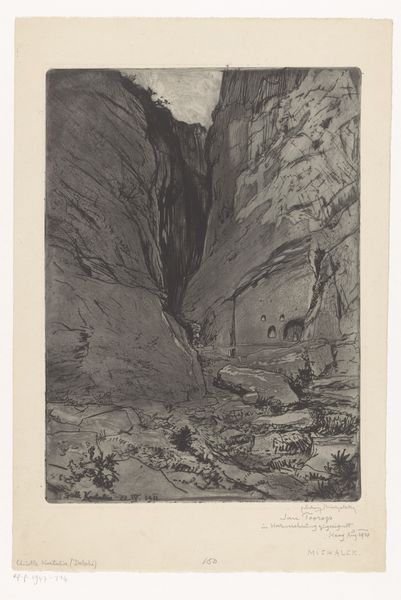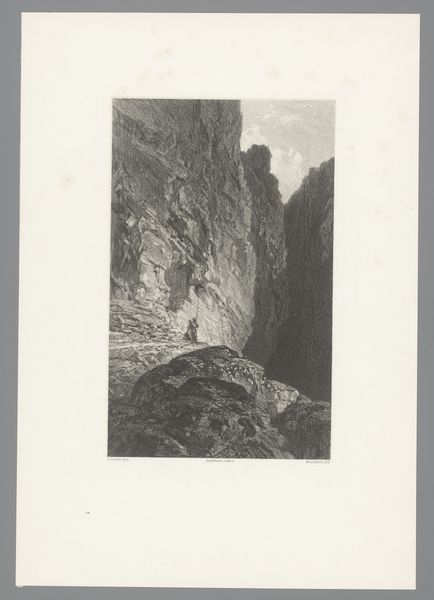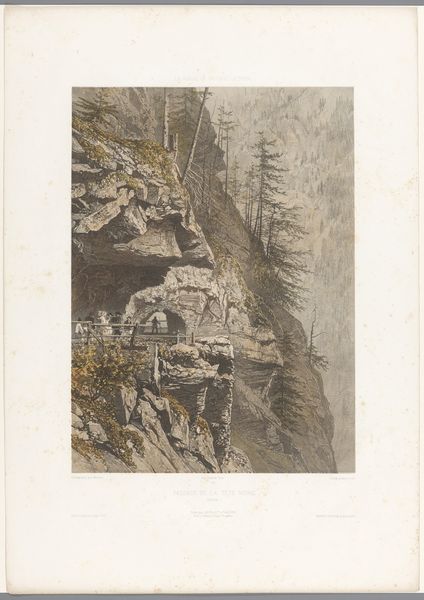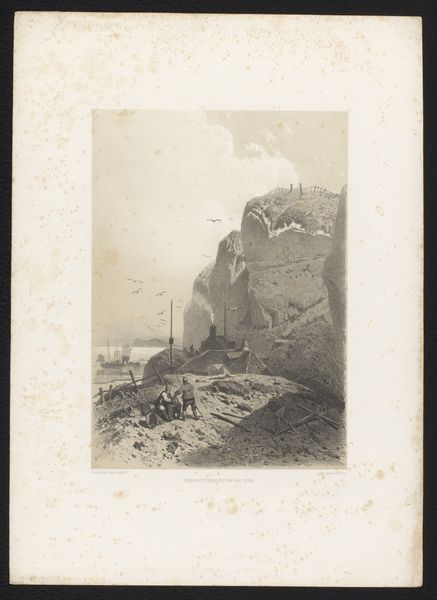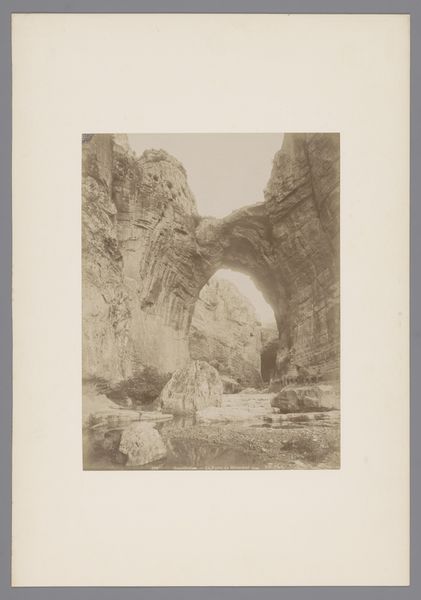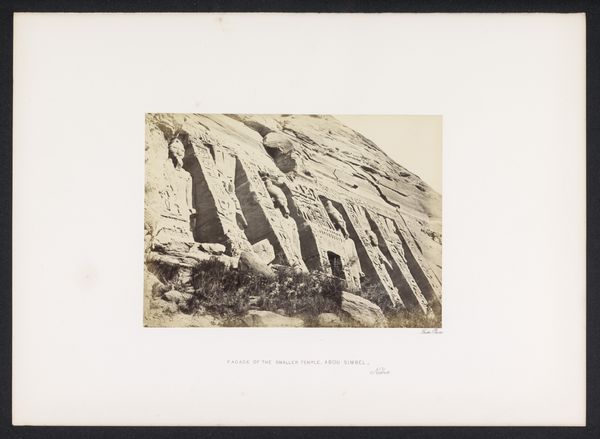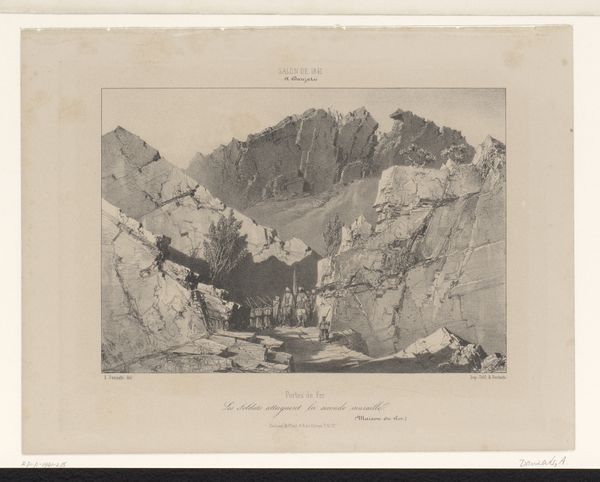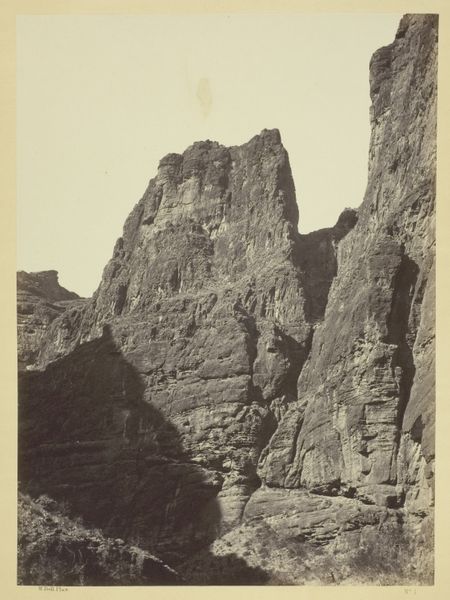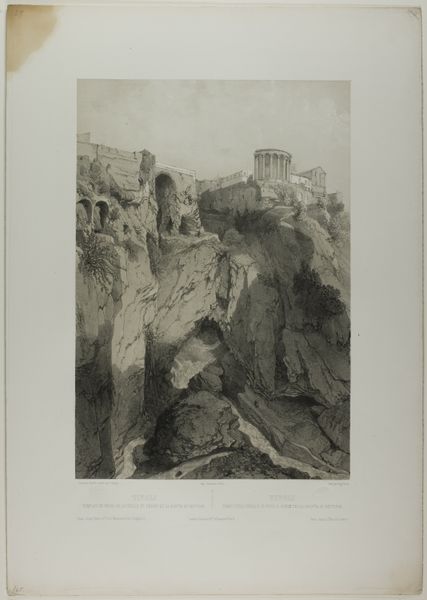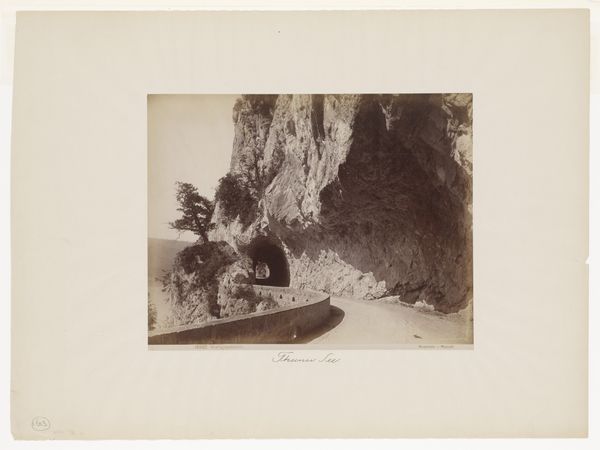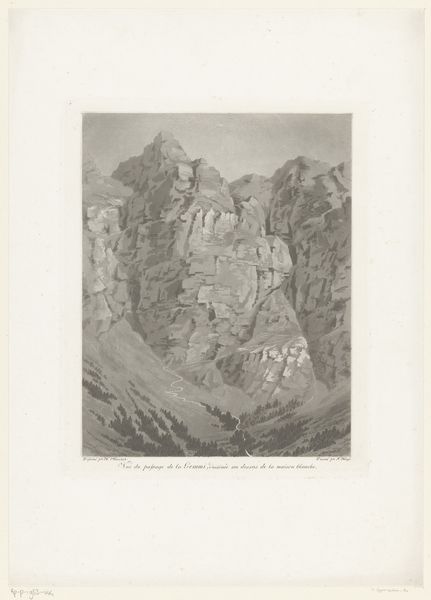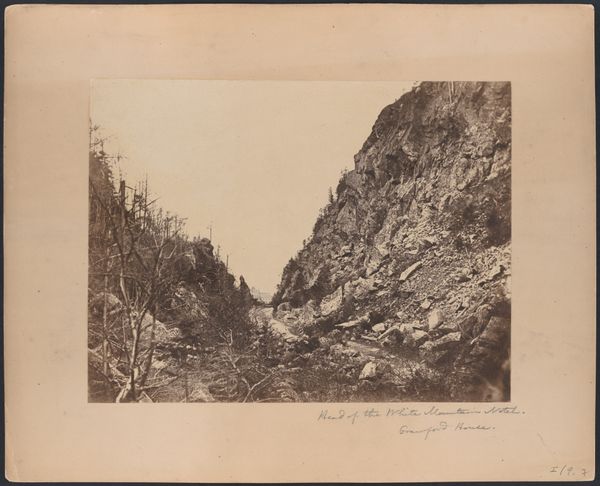
Dimensions: height 395 mm, width 284 mm
Copyright: Rijks Museum: Open Domain
Editor: What a striking image. I'm immediately drawn to the almost precarious placement of those tiny figures along the cliff edges. It evokes such a sense of scale, doesn't it? Curator: It does indeed. We're looking at "Steile rotswand aan zee met figuren" – or "Steep Rocky Coast at Sea with Figures" – an engraving by Eugène Cicéri dating from 1854, now in the Rijksmuseum collection. And it speaks volumes about 19th-century printmaking. Editor: Tell me more. What's compelling to you about its creation? Curator: Well, consider the technical skill involved. An engraving like this demanded meticulous work. Each line, each shade, has been physically etched into the plate, an incredible testament to labor. The consumption of such images would have relied entirely on the reproducibility that such engraving processes provided. Editor: Absolutely. And that reproducibility meant it could circulate widely, shaping perceptions of landscape and travel. You can imagine the public, perhaps unable to visit such places, gaining access to them through imagery like this. Curator: Exactly! Romanticism frequently idealized landscapes as sublime and powerful. It would be distributed across Europe and back here at the Rijksmuseum; it speaks volumes about how we classify and categorize landscapes, art, and our shared experiences across the land. Editor: I agree. One almost feels a sense of the burgeoning tourism industry as well, the very fact of those figures being there, observing the scene from a carefully constructed viewpoint. Curator: And of course, it reinforces a particular socio-political view. Nature as something to be surveyed, dominated, experienced. It's hardly a neutral act, is it, the creation and distribution of an image like this. Editor: Not at all. It's fascinating how a seemingly straightforward landscape can reveal so much about the culture that produced it, from the labor to create the engraving to its impact on people accessing places they wouldn't get to access on their own. Curator: Indeed. It’s about peeling back the layers, revealing the social fabric woven into even the simplest scenes of nature.
Comments
No comments
Be the first to comment and join the conversation on the ultimate creative platform.
